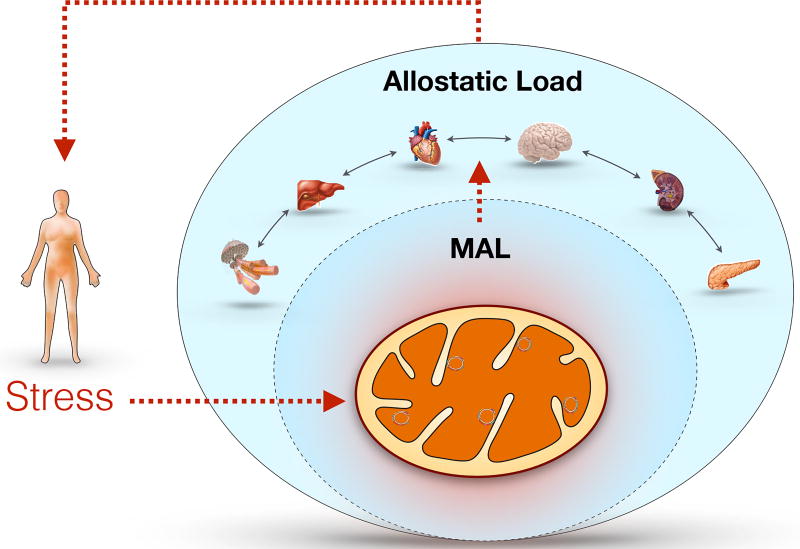Figure 2.
Model of mitochondrial allostatic load (MAL) as a source of systemic allostatic load. Mitochondrial allostasis is the active process of responding to challenges including the demand for ATP and other biomolecules to maintain cell function and survival, as well as providing signaling molecules (e.g., limited amount of ROS). MAL is defined as the dysregulation mitochondrial functions resulting from the structural and functional changes that mitochondria undergo in response to stressors. Challenges that overwhelm the capacity to respond and produce an imbalance contribute, over time, to impaired cell function, senescence, and even cell death. Clinical cases of inherited mitochondrial disorders demonstrate the direct influence of mitochondrial dysfunction on multiple organ systems. Because mitochondria are intrinsic partners and participants in systemic allostasis, MAL is a nested construct that contributes to systemic allostatic load and overload.

